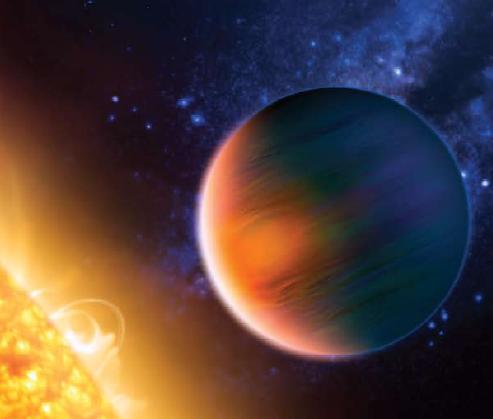This article is more than 1 year old
Boffins find new way to spot stars which have planets
Lithium trick ideal for hunting alien civilisations
Astro boffins have developed a simple method for telling which stars have planets and which don't, potentially a great help in hunting for alien civilisations or uninhabited Earthlike worlds ripe for colonisation by humanity*.

Pah - another useless gas giant. Re-engage the hyperdrive, Number One
It seems that - for some reason not as yet understood - stars which have planets have much less lithium in them than those without planetary systems. Determining how much lithium a star has is easy and simple for astronomers, much less trouble than trying to spot planets across the enormity of interstellar space.
“For almost 10 years we have tried to find out what distinguishes stars with planetary systems from their barren cousins,” says Garik Israelian, lead boffin on a recent lithium-level star survey. “We have now found that the amount of lithium in Sun-like stars depends on whether or not they have planets.”
Israelian and his fellow scientists have established this by doing a census of 500 stars, 70 of which are known to have planets, using the High Accuracy Radial Velocity Planet Searcher (aka HARPS) attached to the European Southern Observatory's 3.6 metre mountaintop telescope in Chile. It appears that stars which are the suns of their own solar system generally have as little as one per cent of the lithium found in planetless ones.
According to the boffins, lithium - one of the lightest elements, with a nucleus composed of only three protons and four neutrons - was mostly formed during the period shortly after the big bang when the universe was just beginning to expand into its present form.
Stars would normally, therefore, be expected to have similar amounts of lithium. Thus Israelian and his colleagues believe that some process involving planets' effects on their parent stars must cause lithium to be destroyed much more quickly. Various kinds of fusion reaction involving lithium can take place in a star's interior.
“There are several ways in which a planet can disturb the internal motions of matter in its host star, [and] thereby rearrange the distribution of the various chemical elements and possibly cause the destruction of lithium. It is now up to the theoreticians to figure out which one is the most likely to happen,” says Michel Mayor, another boffin involved in the study.
The scientists' paper is published in Nature magazine (for paying subscribers) this week, but you can read it for free online in pdf format here, courtesy of the ESO. ®
*Once we iron out a few trifling issues like inventing faster-than-light travel, of course. And some kind of more practical means of getting into space at all, come to that. The current exploding smoke-poles will never do in the long run.
